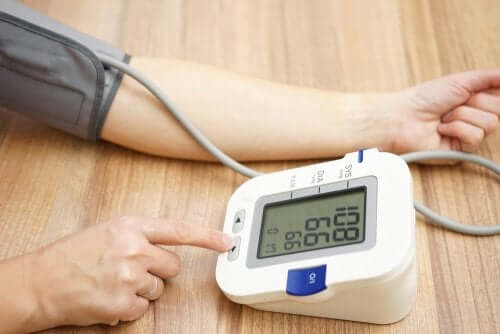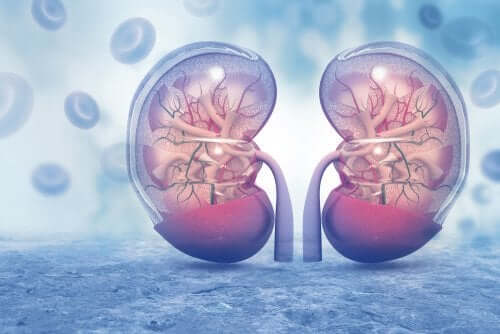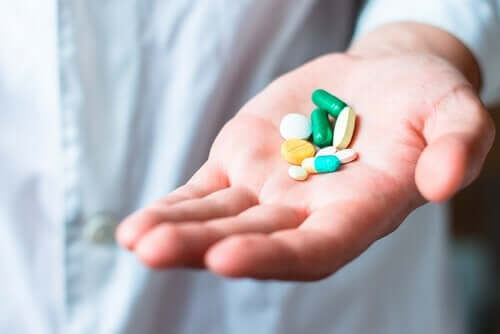Amlodipine: Precautions and Side Effects

Amlodipine is an active principle that medical professionals prescribe patients to treat high blood pressure and angina pectoris. It can be taken alone or combined with other medicines. In this article, we’ll take a closer look at this medication, how it works, and its side effects.
What’s blood pressure and hypertension?

Blood pressure is the pressure exerted on the heart arteries for them to circulate blood. Its value is variable, as it may change several times a day. The maximum or systolic pressure, known as “high”, measures the force of blood in the arteries when the heart contracts. On the other hand, the minimum or diastolic pressure, known as “low”, measures the force of blood in the arteries when the heart is relaxed.
Hypertension or high blood pressure is persistently elevated blood pressure over time. A person has hypertension when their blood pressure is over 140/90 mmHg. If left untreated, it can cause damage to the brain, heart, blood vessels, kidneys, and other parts of the body. This damage can lead to problems including a heart attack, as well as heart and kidney failure.
What does Amlodipine do?
Amlodipine belongs to the group of antihypertensive drugs that act by blocking calcium channels. Therefore, they inhibit the inflow of calcium ions inside the vascular smooth muscle and cardiac muscle.
Amlodipine lowers blood pressure by relaxing the blood vessels so the heart functions more efficiently.
On the other hand, the action of Amlodipine also dilates the arteries and coronary arterioles. Therefore, it increases the oxygen supply to the myocardium in patients with coronary artery spasm, such as people who suffer from angina pectoris. In hypertensive patients, a daily administration of amlodipine significantly reduces blood pressure.
This article may also interest you: Try These Exercises Recommended for Hypertension
Dosage, administration, and special precautions

Also, certain groups should be careful when they’re taking this drug:
Patients with heart failure
Patients with heart failure have to be careful. Calcium channel blockers, including amlodipine, should be used cautiously in patients with congestive heart failure, as the risk of future cardiovascular events and death may increase.
Liver failure and amlodipine
It takes longer for amlodipine to be removed from the bodies of patients who suffer from this condition. Consequently, these patients should start treatment with this drug with the lowest possible dose. However, they should take it with caution, both at the start of treatment and when they start taking a higher dose. Patients with acute liver failure should increase the dose slowly. Also, they require careful monitoring.
Patients with kidney failure
Patients who suffer from this condition can take normal doses of Amlodipine. However, the variations of blood concentrations of Amlodipine don’t necessarily correlate with the degree of kidney failure.
You should also read: What You Should Eat if You Suffered a Heart Attack
Side effects of Amlodipine

Some of the side effects of Amlodipine include:
- Swelling of the hands, feet, ankles, or legs
- Headache
- Stomach pain and discomfort
- Dizziness or nausea
- Sleepiness and excessive tiredness.
Also, some side effects can cause serious health consequences. For this reason, you must go to the doctor if there’s an increase in the frequency or severity of your chest pain. You should also go to the doctor if your cardiac frequency is irregular or if you’re suffering from pounding or fainting.
Conclusion
In addition to taking medications to control your blood pressure, you also need to make lifestyle changes to treat high blood pressure. These changes include a diet low in fats and salt, maintaining a healthy weight, and exercising at least half an hour every day. Also, it’s best to avoid smoking and consume alcohol in moderation.
All cited sources were thoroughly reviewed by our team to ensure their quality, reliability, currency, and validity. The bibliography of this article was considered reliable and of academic or scientific accuracy.
-
Zegarra, J., Meza, M., Cornejo, C., Porras, W., Díaz, A., Heredia, O., … Hernández, A. (2017). Amlodipino y choque vasodilatado en una unidad de cuidados intensivos de un hospital general. Reporte de caso. Revista Medica Herediana. https://doi.org/10.20453/rmh.v28i2.3110
-
Gil de Miguel, A., Jiménez García, R., Carrasco Garrido, P., Martínez González, J., Fernández González, I., & Espejo Martínez, J. (2013). Seguridad y efectividad de amlodipino en pacientes hipertensos no controlados farmacológicamente en el ámbito de Atención Primaria. Hipertensión y Riesgo Vascular. https://doi.org/10.1016/s1889-1837(00)71072-5
-
Valcárcel, Y., Jiménez, R., Arístegui, R., & Gil, A. (2013). Estudio de farmacovigilancia para evaluar la seguridad y a efectividad de amlodipino en pacientes ancianos hipertensos. Revista Española de Geriatría y Gerontología. https://doi.org/10.1016/s0211-139x(04)74977-x
This text is provided for informational purposes only and does not replace consultation with a professional. If in doubt, consult your specialist.








